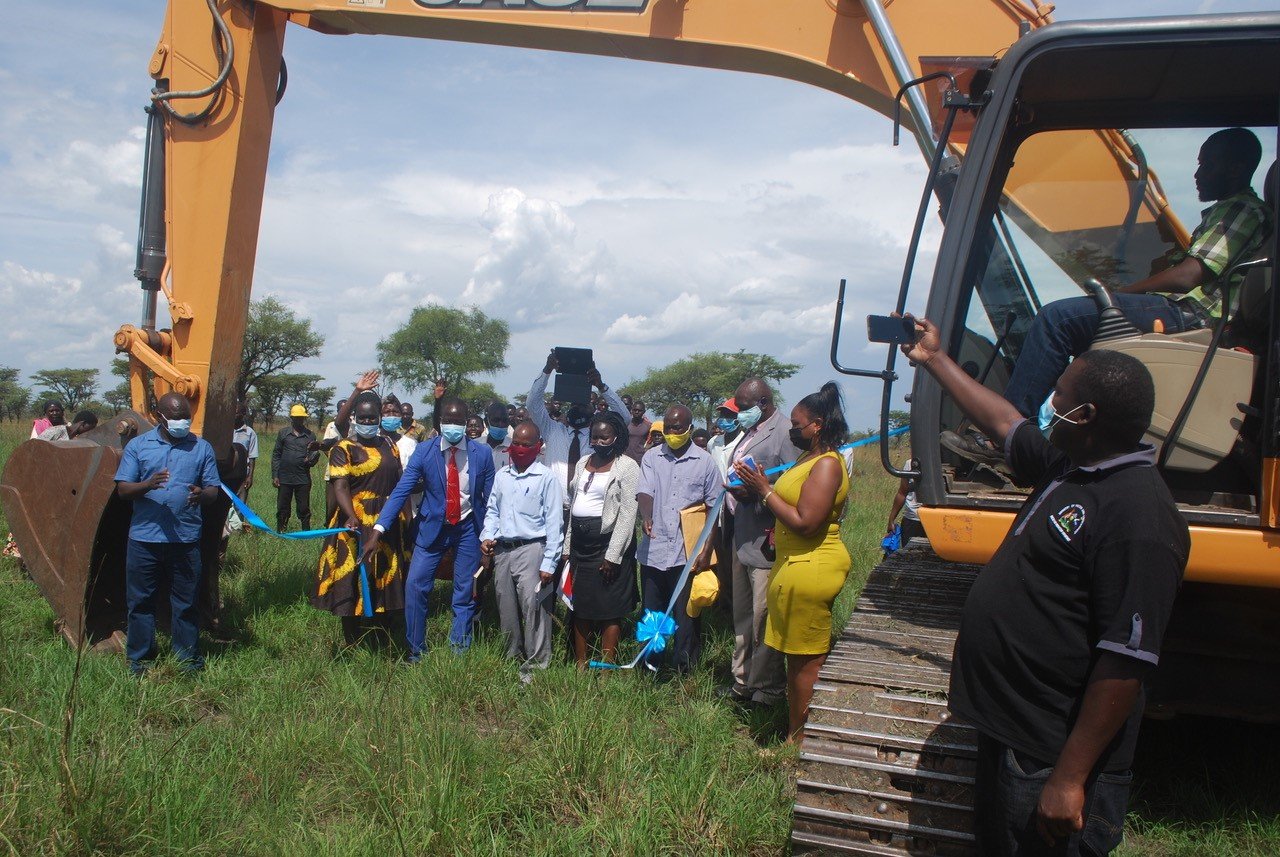We welcome works on Teso valley dams

Officials from Ministry of Water and district leaders during the commissioning of the construction of Odukul Dam in Kapelebyong Town Council last Friday. PHOTO | FRED WAMBEDE
News that the government has launched the construction of six valley dams on Teso Sub-region is music to the ears. We hope it comes to fruition.
To kick off the discourse, a valley dam is a structure or barrier constructed across a valley, river or stream to conserve or store water. The water may be used for drinking, hydroelectric power generation, irrigation, or other purposes.
Teso is a semi-arid area and suffers extreme weather conditions ferocious flooding during the rainy season and brutal sunshine during the dry season.
The dams, thus, come in handy to safeguard against these extremes.
This newspaper has done numerous stories about the need for dams in the sub-region and other cattlecorridor districts. A particular visit to Kumi, Soroti and Katakwi districts in 2014 by this newspaper established the extent of the problem.
Many residents in that area did not have proper sources of water for farming and domestic use because the existing dams had been silted and condemned to the wild. Consequently, even the little crops they grew would rot away under the heavy blanket of persistent floods.
The collateral was destruction of homesteads, health centres, schools and road network.
It is for this reason that we applaud the move to construct the 30 million-litre capacity tanks, which authorities value at Shs3.8 billion. We shall be back to ask the questions after the four-months duration in which works would have been completed.
Relatedly, there have been concerns from farmers before, especially from those in Kapokin Village, Kapokin Parish, Atutur Sub-county in Kumi District, who in 2018 rejected the construction of valley dams.
They claimed then that it was useless for government to bring back to life the facilities yet their claim for compensation for livestock lost during the 1980s fell on deaf ears.
To them, a dam would be a white elephant without cattle to utilise it because that was their main economic activity back in the day and only restocking would fill the puzzle.
It is estimated that between 1987 and 1992, almost 93 per cent of the castle stock in Teso was wiped out due to cattle rustling and the raging insurgency.
We acknowledge that there have been attempts to compensate the claimants even when it is locked up in a web of bureaucracy and legal hurdles.
In a nutshell, we ask the responsible authorities to ensure the valley dams are completed, and then they can fulfill the rest.




